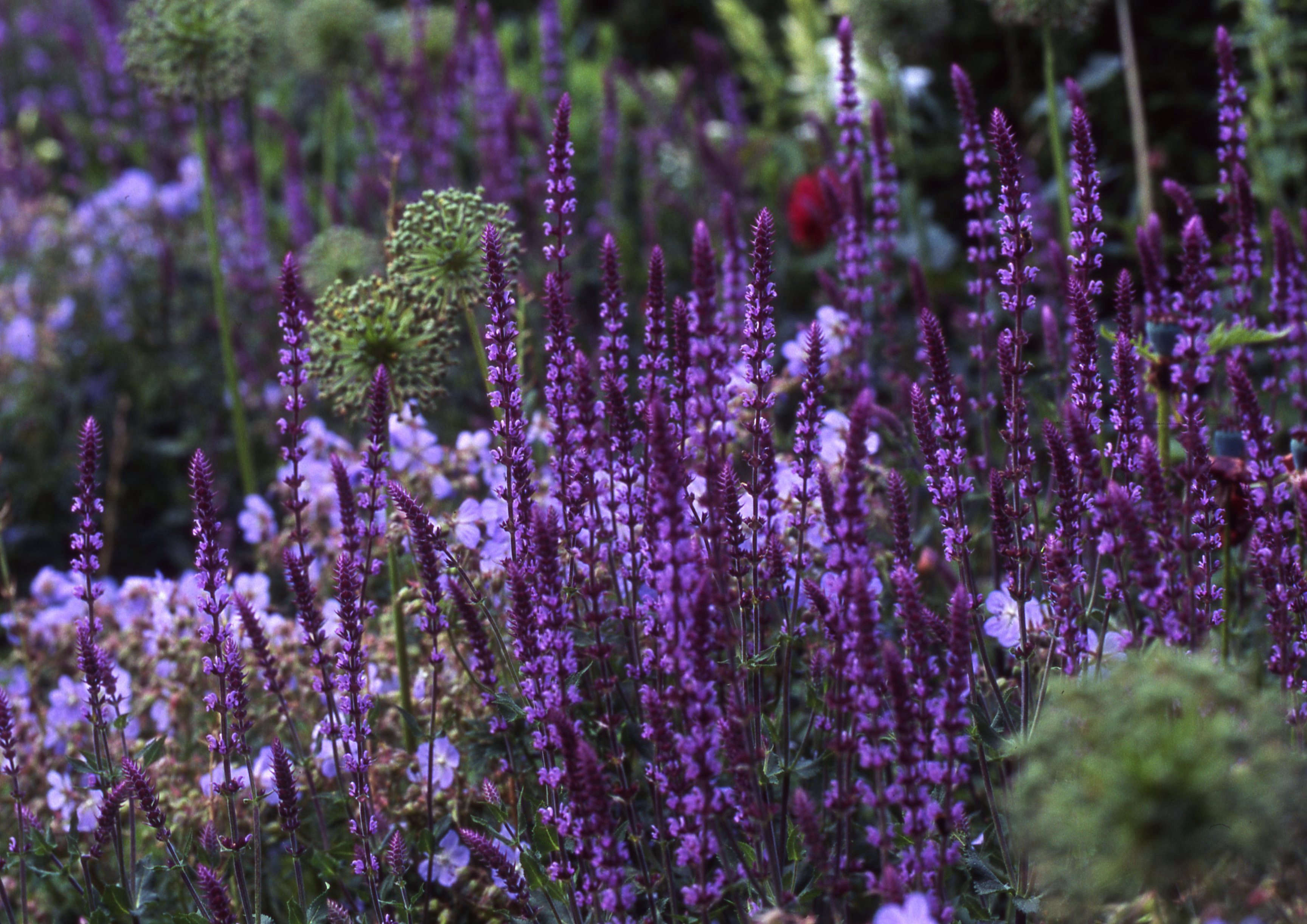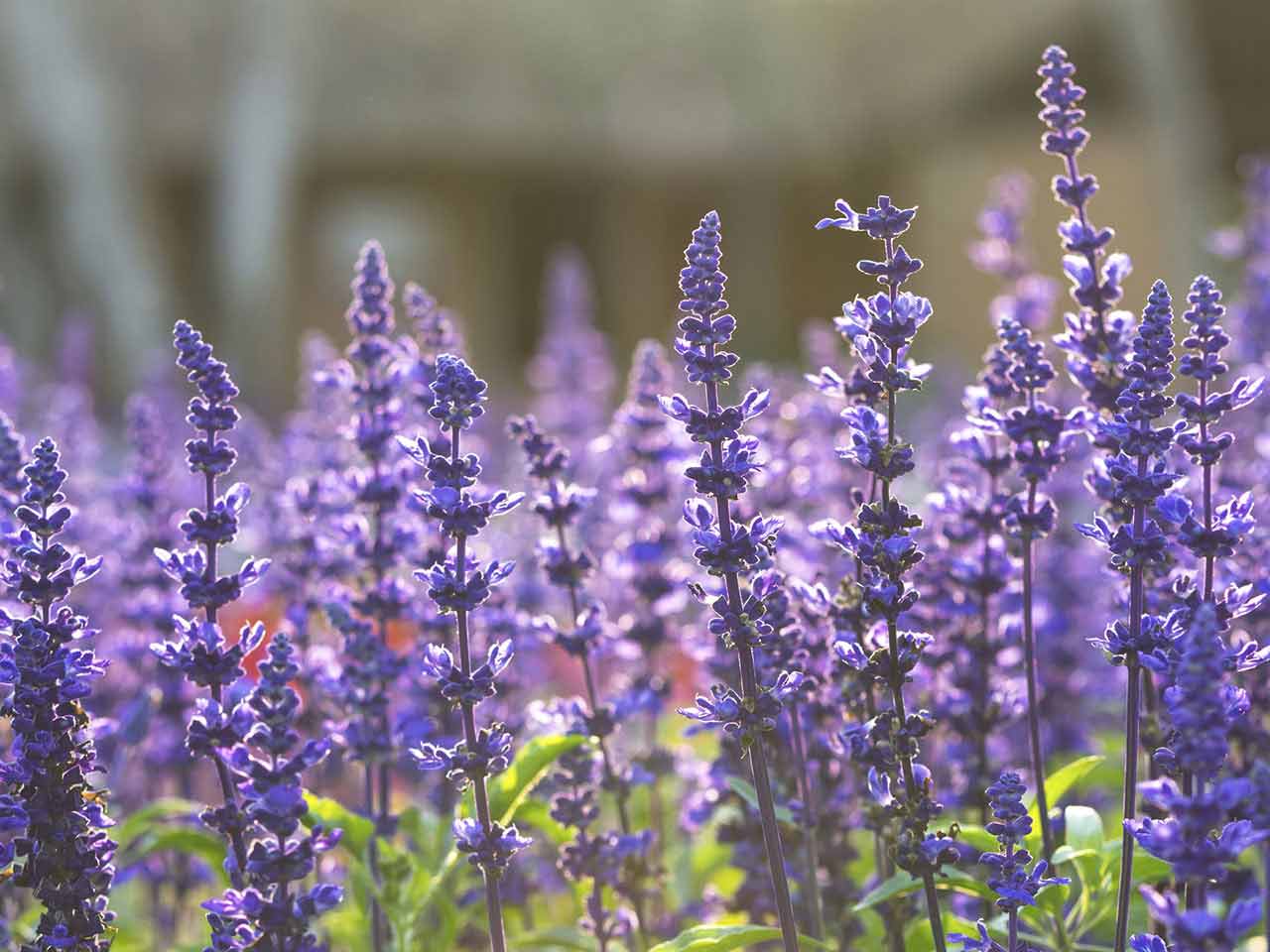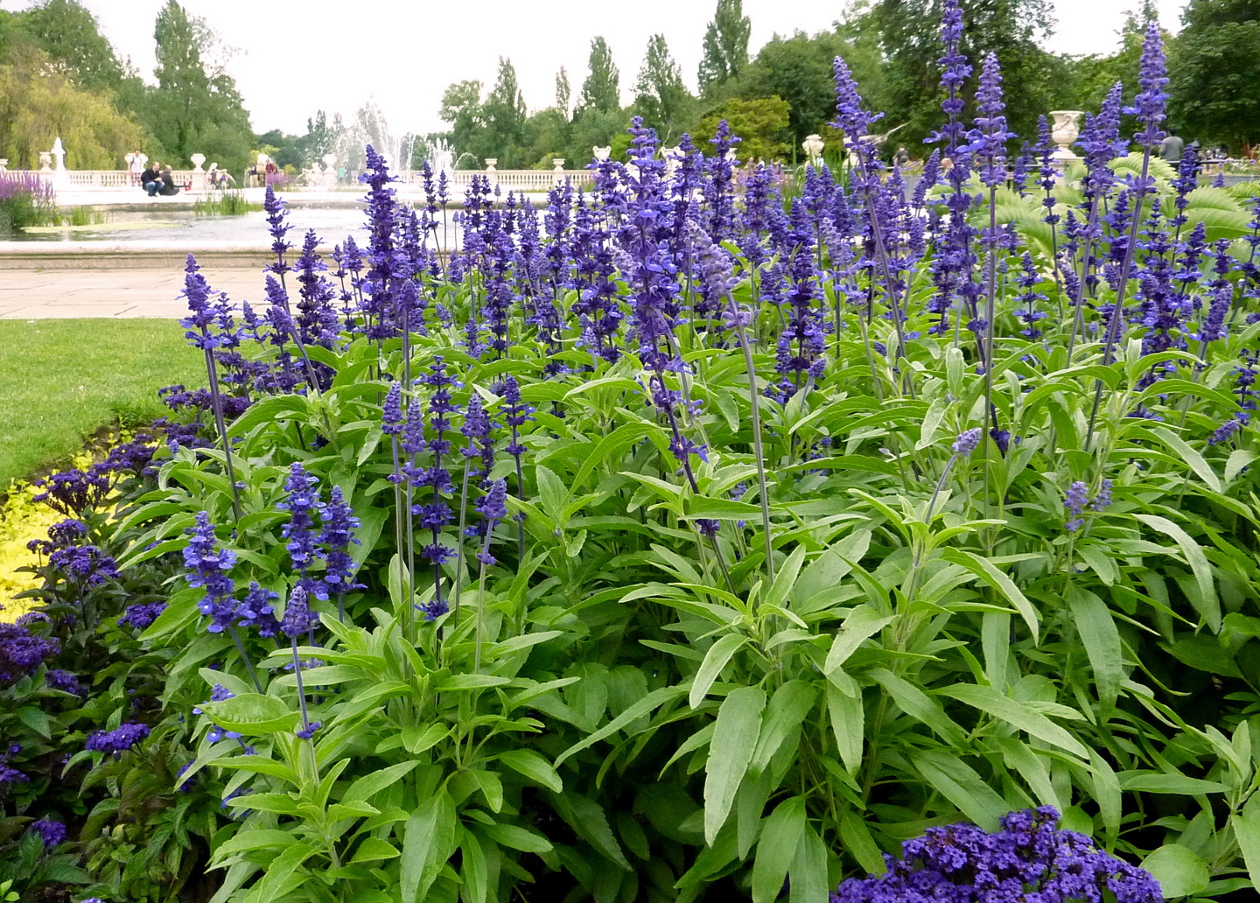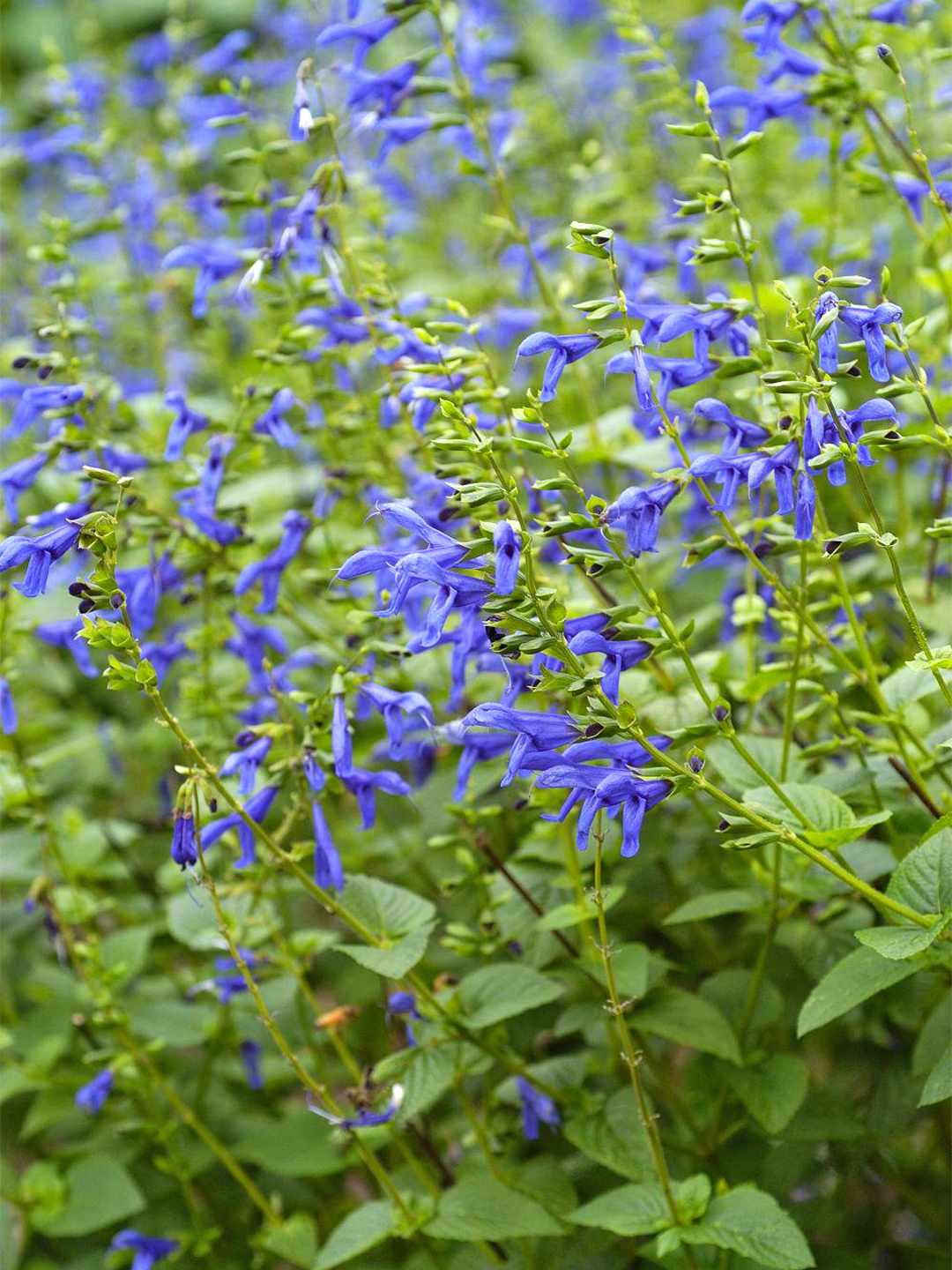/GettyImages-157510320-93117296d20e40c4b9f059c1941f8c10.jpg)
Salvia leucantha (Mexican Bush Sage) Care and Growing Guide
Choosing a site to grow salvias Select a site with full sun and very well-drained soil. Planting Instructions Plant in spring, spacing plants 1 to 3 feet apart, depending on the variety. Prepare the garden bed by using a garden fork or tiller to loosen the soil to a depth of 12 to 15 inches, then mix in a 2- to 4-inch layer of compost. Dig a.

Salvia varieties create colorful, informal feel Mississippi State
Salvia microphylla 'Hot Lips' is a perennial bicolor salvia that can grow up to 3 feet tall in USDA Zones 8 to 12. Its lipstick-red flowers turn red and white during peak summer days, and then.

Gardening 101 Salvia Gardenista
Salvia plants thrive in full sun, attract hummingbirds, and begin blooming in early summer. These tubular flowers love sunlight and need well-drained soil in which to thrive. The best salvia companion plants will enjoy the same conditions, making it easy to put together flower beds resplendent in vibrant blooms. Saliva is a low-maintenance flowering herb.

How to grow salvias Saga
Grow well in pots, beds and borders. Drought-tolerant once established. Many are hardy, but some need winter protection. Attractive to pollinators, such as bees. Plant in spring and early summer after frosts. Easy to propagate by seed or softwood cuttings. Generally free from pest and diseases. Evergreen species tend to be deer-proof.

Salvia How to Plant, Grow, and Care for Salvia (Sage) The Old Farmer
Salvia prefers full sun for at least 6-8 hours a day. Salvia requires full sun to thrive and produce blooms consistently. This means that they will need to receive sun for at least 6-8 hours daily. This constant amount of sun will keep your Salvia producing consistent flowers all season long.

Care of Salvia Plants
Salvia x jamensis 'Sierra San Antonio'. Growing to a height of 75cm, this shrubby perennial salvia will produce a profusion of creamy yellow and peach coloured flowers. Plant 'Sierra San Antonio' in full sun, and provide good drainage to ensure its hardiness. Very drought-tolerant. Height x spread: 75cm x 30cm.

What 's doing the blooming? Perennial Salvia Knecht's Nurseries
Bob Lenz. 'Cirrus' is a delightful salvia plant bearing spikes of pure-white flowers all summer and autumn. Like other forms of blue salvia, it shines with silvery foliage and adapts to different soil types. It's a good selection for cutting and makes a beautiful accent to plants with deep blue flowers.

New plants for 2015 Salvias
Salvia plants don't need rich soil, but they must have good drainage. If your soil is heavy, plant "proud", or slightly higher than the surrounding grade. In pots, a mixture of ordinary garden soil mixed with perlite allows water to drain rapidly. Whether in the garden or in a pot, a mulch of wood chips or small, rough-edged rock is highly.

How to Plant, Grow & Care for Salvias Sarah Raven
Salvia spp.. Salvia, a genus of plants in the mint (Lamiaceae) family with nearly a thousand members, is known for its toughness.. Heat tolerant, frost tolerant, drought tolerant, impervious to pests and disease, deer resistant - salvia takes a lickin' and keeps on blooming beautifully.

FileSalvia officinalis Habitus DehesaBoyalPuertollano.jpg Wikimedia
The short answer is no. Salvias will tolerate a range of soils, provided it is well-drained, but do not survive cold, wet winters in waterlogged grounds. They grow best in a sunny, sheltered position and, while tolerating low light levels and partial shade, they flower less prolifically, and lean towards the light, adopting an ungainly shape.

Salvia Blue Harlow Gardens
How to grow salvia. All salvias grow best in full sun, in well-drained soil. Deadhead to prolong flowering. Salvias may be lost over the winter if the soil is very cold and wet, so take cuttings at the end of the summer to insure against winter losses. Alternatively, grow tender varieties in pots and keep in a frost-free spot over winter.

A Gardener's Guide to Salvias Better Homes & Gardens
Salvias, with their aromatic foliage, act as natural pest deterrents, protecting both themselves and their petunia companions from unwanted pests. Petunias, in turn, act as ground covers, helping retain moisture and suppress weeds around the salvia's base, promoting healthy growth for both. Additionally, they both plants bring pollinators to.

What 's doing the blooming? Perennial Salvia Knecht's Nurseries
Buy salvia plants - Order online and have them shipped right to your door. Salvia is a large genus of ornamental and culinary plants, with some 1,000 species worldwide. Plants produce aromatic foliage and attractive flower spikes in colors of purple, blue, red, pink, coral or white from late spring to fall, depending on the variety.
/red-salvia-big-56a584eb3df78cf77288af1f.jpg)
Red Salvia Flowers How to Grow Scarlet Sage Plants
Salvias are one of the best plants to bring summer colour into the garden and build in stature and intensity right through to late autumn. There is a huge range to choose from with delicate annual salvias in blues, mauves and pinks so easy to grow from seed, through the tall exotic blooms from South America, to the hardy hybrid herbaceous perennials and shrubs.
:max_bytes(150000):strip_icc()/Caradonna-GettyImages-1131953835-afe65f0d82f54b52ab2d19c8f4fee801.jpg)
Common Types of Salvia Flowers (Annual and Perennial)
While all different shapes, the flowers are a similar colour, which is enhanced by the blue of the pot and the fresh green foliage. The overall appearance is of a very uniform look. As time wears on, the ground ivy and petunia will spill over the sides of the pot and the salvias will grow tall. By autumn the plants will have out-grown this pot.
:max_bytes(150000):strip_icc()/GettyImages-1148874603-228265c780cd45a58af183300d24c57c.jpg)
10 Popular Species of Salvia Plants
Some plants that are good companion plants for European and Asian salvias (old world salvias) are poppy mallow, Petunia, astelia and ground ivy, evening primrose, Agapanthus, oriental poppies,Petunia, astelia and ground ivy, daylilies, and yarrow. Each of these plants have complementary growth habits and bloom times that help to boost the.